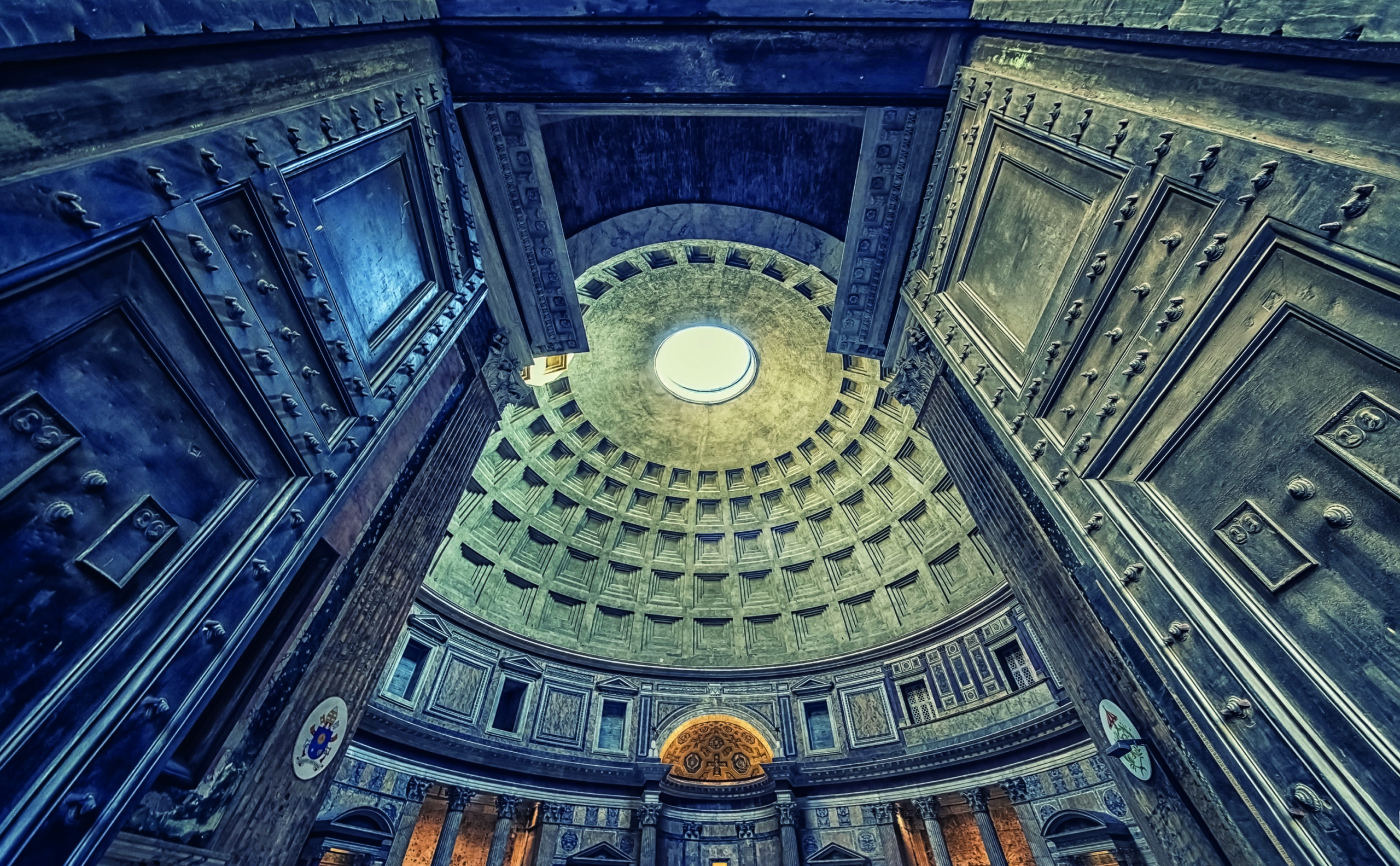
The large bronze doors to the cella, at the Pantheon in Rome measure 4.45 metres (14.6 ft) wide by 7.53 metres (24.7 ft) high and are the oldest in Rome. The present version, which has survived almost 2000 years, was built by Hadrian between 118-128 AD.
These were thought to be a 15th-century replacement for the original, mainly because they were deemed by contemporary architects to be too small for the door frames. However, analysis of the fusion technique confirmed that these are the original Roman doors – one of only three buildings in ancient Rome to have preserved its original bronze doors, despite cleaning and the application of Christian motifs over the centuries.
Despite the massive size of the doors each one can be pushed or pulled open by one person. Each half of the double door weighs 8.5 tonnes, and rotates on pins set into the floor and the architrave above. An ingenious but laborious and little understood system allowed removal of the wooden architrave and replacement of the pins which tend to wear. In 1757, an attempt to keep the door working by replacing the pins
failed and the whole thing fell, killing the foreman trying to remount it.
The right door was left totally blocked and the left door would open only partially. Two centuries later, after much careful study, using just soap and specially-made plates to slightly lift the doors, the pins were replaced, the doors put back into their seats, and finally both could be opened and shut. It was 1998; the doors had not been fully opened for 241 years.








